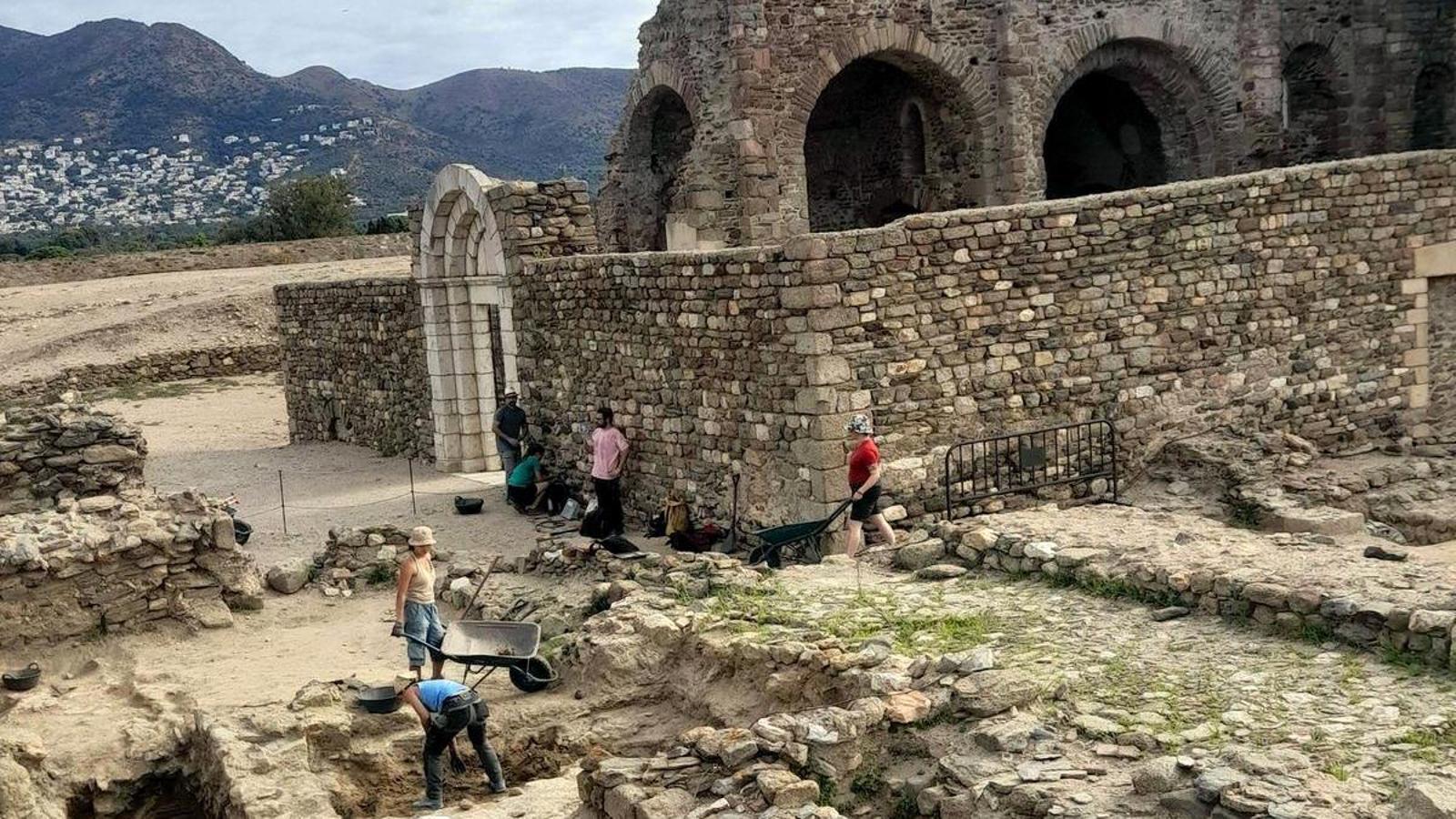The existence of a large funerary complex from the 4th and 6th centuries in the Ciutadella de Roses has been confirmed.
Recent excavations in the cloister of the monastery of Santa Maria reveal the structure of a large necropolis

BarcelonaArchaeological excavations in the cloister of the Monastery of Santa Maria, at the Ciutadella de Roses site, have confirmed the existence of a large funerary complex from the 4th to the 6th centuries AD, beneath the monastery's structures. These works, carried out within the framework of the 7th International Course on Medieval and Modern Archaeology and promoted by the Rosas Chair of Archaeology and Archaeological Heritage, have revealed an ancient Christian community in Roses that was "much more important and rich" than previously speculated, according to archaeologists.
Since the mid-20th century, there has been evidence of a small 5th-century funerary church surrounded by an early Christian cemetery. However, the latest work has confirmed that this building was part of a larger complex. The building is larger than the monastery that was built later, the ruins of which can be seen today. According to the archaeologists, "the dimensions of the building and the quality of its construction also allow us to grasp the importance of the community in Late Antique Roses [4th-6th centuries]."
The new work has expanded our knowledge of different sectors of the Early Christian necropolis. In the southern area, new tombs have been identified, mostly children's burials arranged in amphorae. These containers were sectioned to accommodate the deceased's body and sealed again. The tombs were arranged in a relatively orderly fashion, often aligned from east to west, with a tendency to pile up near the temple wall. The archaeological work has allowed them to identify two phases in the necropolis: an initial one with amphora tombs and a second from the 6th century with stone box burials. Furthermore, they have uncovered the structure of the founding monastery, built in the 10th century. The work has confirmed "the existence of a much larger and more complex building than previously thought," the archaeologists emphasize.
The fascinating past of the monastery
The Monastery of Santa María de Roses, where the archaeological work was carried out, was founded in the 10th century and is the most emblematic element of the site. Active until the 18th century, it also served as a parish church. Reused elements, such as a kind of altar with an inscription about the founding of the monastery by Count Sunyer, confirm continuous occupation from the Greek period to the 6th century, with various burials and walls that shape the construction history of the settlement. West. Recent excavations have documented at least 231 burials between 1696 and 1794, of which 63 individuals have been identified. 11th century. Since 2018, the Roses Chair has been promoting a new project to recover the urban layout of the eastern half, with relevant discoveries in Major and Nou streets. a possible blood mill from the 18th century.
